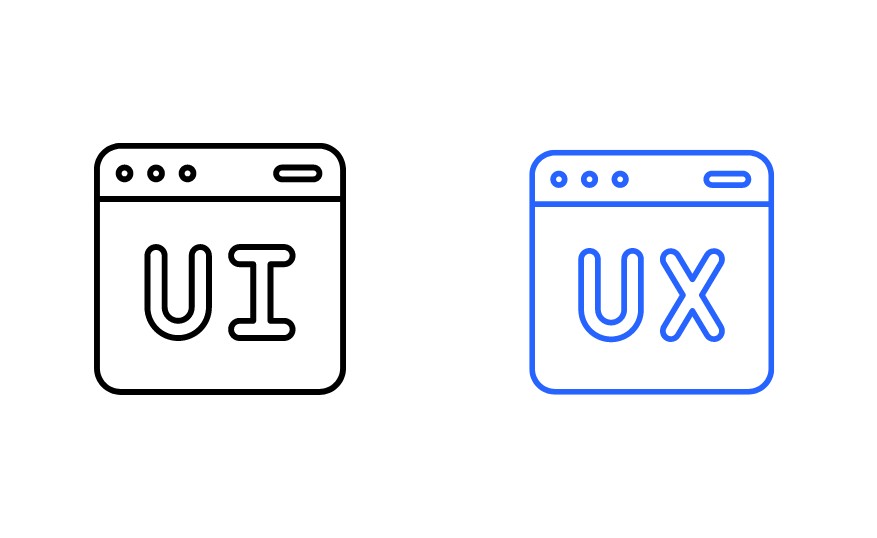Table of Contents
We are living in the world of mobile apps. Whether it’s an e-commerce app or a booking app, it is not only the app that matters but also how smoothly it functions and easily gives you the information when needed. The quicker, easier, and smoother the UI and UX are, the more successful the mobile app is. The role of UI/UX in mobile app development plays a major role in defining success and popularity. Also, a good designer must know how important the role of UI/UX is for the success of a mobile application and every business.
Let’s examine the importance of User Interface (UI) and User Experience (UX) design in more detail in this blog post and discover how businesses and entrepreneurs may benefit from their successful integration during the product development process.
Understanding UI and UX

Before we delve deeper into the role of UI/UX, it’s essential to distinguish between the two:
User Interface (UI):
This refers to the visual elements of an application, including buttons, icons, images, and layouts. UI design focuses on aesthetics, ensuring the app is visually appealing and consistent.
User Experience (UX):
This encompasses the overall feel of the app from the user’s perspective. UX design aims to create a seamless, efficient, and enjoyable interaction between the user and the app.
UI and UX are intertwined and equally important in mobile app development. A beautifully designed interface can attract users, but only a well-thought-out user experience can retain them.
The Role of UI/UX in Mobile Application Development

Making a Good Early Impression
A mobile app’s initial appearance is critical to attracting and keeping users. An application’s visual attractiveness can be improved, and a smooth and simple user experience can be produced, with a well-designed UI/UX. Users might be captivated and encouraged to explore further by an interface that is clear, aesthetically beautiful, and has features that are easy to access. Through the investment in UI/UX design, developers of mobile applications can create a memorable first impression for their app.
Improving Functionality and Usability
The usability and usefulness of a mobile application are the main priorities of user interface/user experience (UI/UX) design. Users may easily navigate through an intuitive user interface, which guarantees they can quickly access the main features and functionalities of the app. Through implementing UX design concepts, which include wireframing, prototyping, and user research, app developers can detect and resolve possible usability problems, ultimately producing a more intuitive and useful application.
Increasing User Attraction and Stickiness
An appealing mobile application draws users in, maintains their interest, and promotes continuous use. User engagement may greatly increase by implementing UI/UX design components including tailored experiences, smooth transitions, and interactive animations. By providing a fun and engaging experience, a mobile app may boost user happiness and improve retention rates as well as user loyalty.
Changes to UI/UX that maximize productivity
It is common knowledge that apps with higher performance and speed command a higher ranking in the current market. However, did you also realize that improving app speed is mostly dependent on UI/UX? One usability feature that establishes how quickly an app can do a task or a series of tasks that a user has requested is its speed of usage. Even if faster technology is necessary, it cannot provide the highest speed of usage on its own unless it is paired with the best possible navigation flow. Applications can be made much faster and more efficiently if product development follows UX principles such as enlarging target regions and reducing pointer movements.
Increasing Credibility and Reputation of the Brand
An intuitive and aesthetically pleasing app enhances the reputation of the company that created it. In app development, the role of UI/UX design is crucial to maintaining brand identity and can enhance the legitimacy and general reputation of a mobile app. A well-designed app leaves consumers with a lasting impression of the company and fosters trust. Good user experiences can generate more downloads, word-of-mouth referrals, and users overall.
Higher Rates of Conversion
Conversion rates in app development can be greatly impacted by a well-designed UI/UX. UI/UX design can maximize an app’s conversion funnel by emphasizing calls to action, faster checkout processes, and easy navigation. Users are more likely to finish desired tasks, like making purchases, signing up for services, or completing forms, when they have a smooth and user-friendly experience, which increases conversion rates and boosts app success.
Adjustment to Various Platforms and Devices
Because there is such a vast array of mobile devices and operating systems, mobile application’s user interface and user experience (UI/UX) play a critical role in guaranteeing compatibility and consistency across many platforms. UI/UX design makes it possible for users to access and engage with an application without difficulty on any device by utilizing responsive design principles to adjust the app’s interface to various screen sizes, resolutions, and orientations.
Inclusivity and Accessibility
The significance of diversity and accessibility in mobile app development is also addressed by UI/UX design. UI UX design in app development can integrate features like screen readers, color contrast settings, and intuitive motions to guarantee all users can access and utilize the app efficiently. These features are made possible by taking into consideration people with disabilities, such as visual impairments or motor restrictions. Developing an app that is both inclusive and accessible increases the user base and shows a dedication to giving all users equal chances.
The Role of UI/UX in Android Application Development

Android application development presents unique challenges and opportunities for UI/UX design. With a diverse range of devices and operating system versions, designing a consistent and responsive interface can be complex. However, effective UI/UX design is crucial for success in the Android market.
Android users come from a wide range of demographics and regions, each with unique preferences and expectations. UI/UX design for Android applications must consider this diversity to create an inclusive and engaging experience for all users. Localization and customization options can enhance user satisfaction by catering to specific needs and preferences.
Google provides comprehensive design guidelines for Android applications, known as Material Design. These guidelines outline best practices for creating visually consistent and user-friendly interfaces. Adhering to these guidelines helps ensure that the app meets users’ expectations and provides a cohesive experience across the Android ecosystem.
Android devices vary significantly in screen size, resolution, and hardware capabilities. UI/UX design must account for these variations to ensure a consistent experience across all devices. Responsive design techniques, such as adaptive layouts and scalable graphics, are essential for optimizing the app’s performance and usability on different devices.
Android offers a range of features and capabilities that can enhance the UI/UX design of an application. Integrating features like notifications, widgets, and voice commands can create a more dynamic and interactive user experience. Leveraging these features effectively requires a deep understanding of the Android platform and its capabilities.
Conclusion
In the world of mobile application development, the role of UI/UX can’t be ignored. From developing a positive first impression to improving usability, retention, and conversion rates, advanced UI/UX design is important to an app’s success.
By including user-centered design and continuous improvement, developers can develop mobile apps that get popular in the competitive market and give exceptional value to users
Whether focusing on general mobile app development or specifically on Android application development, the principles of UI/UX design remain the same. Understanding the target audience, creating intuitive and visually appealing interfaces, and continuously refining the user experience is key to developing successful mobile apps.
As technology for custom mobile app development continues to evolve, the importance of UI/UX design will only grow, making it a critical component of any mobile app development strategy.



Add a Comment